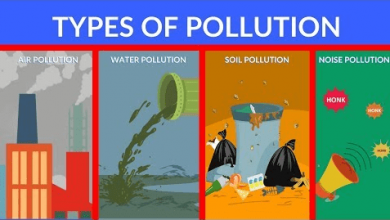Types of Proteins and Their Examples

The name of proteins is known to molecules formed by amino acids which are linked by a type of links known as peptide bonds. Proteins make up about half the dry weight of tissues (and 20% of people’s body weight), and there is no biological process that does not include them.
The composition of these molecules is carbon, hydrogen, oxygen, and nitrogen. The order and arrangement of amino acids within the protein depends on the person’s genetic code, that is, DNA.
What function do they fulfill?
Proteins have a function that is essential for growth and is mainly motivated by the nitrogen content that is not present in any of the other molecules that are incorporated through food: carbohydrates and fats.
Unlike these two, proteins do not have an energy reserve function, but they do have a fundamental role in the synthesis and maintenance of some tissues or components of the body such as gastric juices, hemoglobin, vitamins, and some enzymes. Similarly, they help transport various gases into the blood, and function as shock absorbers.
Among the functions of proteins, on the other hand, is that of providing essential amino acids essential for tissue synthesis, and also acting as biological catalysts accelerating the speed of chemical reactions of metabolism. Finally, it can be said that proteins act with a defense mechanism since antibodies are natural defense proteins against infections or foreign agents.
See also: What are Trace Elements?
Properties
Regarding the properties of proteins, it can be said that stability is the most important because proteins must be stable in the environment in which they are stored or in which they perform their function, in order to extend their life as much as possible avoiding that setbacks are generated in the body.
On the other hand, proteins have a temperature and a pH to maintain to guarantee that stability, so the second fundamental property is said to be that of solubility.
Some other minor properties such as specificity, pH damping, or electrolytic capacity are also typical of this class of molecules.
Classification of Proteins
The most usual classification of proteins is made according to their chemical structure, among the simple proteins that only produce amino acids when hydrolyzed; the albumins and globulins that are soluble in water and dilute solutions; the glutelin and prolamins which are soluble in acid; the albuminoids which are insoluble in water; the conjugated proteins containing nonprotein parts and proteins derived are hydrolysis product.
Importance in diet
The main source of protein in the body is diet. The importance of including protein in the diet has a special emphasis on children who are growing and pregnant women, who need the production of new cells.
When people eat fruits, vegetables or meats, they usually incorporate a large amount of protein through the process known as protein digestion, which consists of breaking down the product into simple amino acids, and then assembling them into proteins for the body, in the process called protein synthesis. Only after this are they incorporated into the body.
Examples of Proteins
| Fibrinogen | Amylase enzyme |
| Fibrin | Zeina |
| Elastin | Gamma globulin |
| Glutein | Hemoglobin |
| Lipase enzyme | Pepsin |
| Prolactin | Actin |
| Collagen | Protease enzyme |
| Insulin | Myosin |
| Casein | Antibodies (or immunoglobulins) |
| Keratin | Albumin |
See also: Examples of Digestive Enzymes
Protein-rich foods
| Soy | Sardines |
| Milk | Lean pork |
| Lentils | Chicken |
| Manchego cheese | Beef |
| Lean cheese | Chickpeas |
| Roquefort cheese | Almonds |
| Turkey ham | Blood sausage |
| Pork loin | Egg white |
| Cod | Skim milk |
| Serrano ham | Hake |
| Peanut | Snails |
| Salami | Lamb |
| Smoked ham | Pistachios |
| Tuna | Salmon |
| Cooked ham | Sole |
It can help you:
- Examples of Carbohydrates
- Examples of Lipids
- Examples of Trace Elements (and their function)
